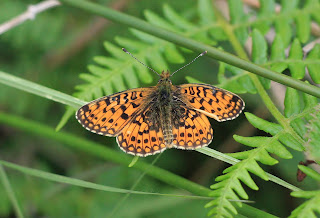Male Blue-tailed Damselfly - The much more common blue-tailed damselfly species. Present throughout a vast proportion of the UK
Male Scarce Blue-tailed Damselfly - As the name suggests, this is more less common species that the above Blue-tailed. Anglesey is a great place for the species.
In terms of distinguishing between the two species, you have to look at their name sake blue 'tail'. The Abdomen is segmented and in most species, the key segment is segment 2 (or the segment at the base of the abdomen near the thorax). Segment 8 and 9 are the most important in the blue-tailed species. Clicking to enlarge the images, you will see that on Blue-tailed damselfly, segment 8 is completely blue and segment 9 is black. Scarce Blue-tailed Damselfly has it's blue tail closer to the tip and segment 8 is shown with half black and half blue with an additional half blue segment 9.
Male Variable Damselfly - These were surprisingly regular at the site with about 20 seen.
Defining features are the two '!' exclamation marks on the thorax, which are very variable and can sometimes be joined up, as well as being almost completely absent from the thorax leaving it all black. In addition, segment 2 is similar to the open box shape seen in Azure Damselfly, but is said to look like a wine glass. That can just about be seen on this photo.
above and below - blue female Variable Damselfly
Small Pearl-bordered Fritillary - I was a tad disappointed as I always get back into insects during the summer at the end of June or later, so yet again I have, as far as I could tell today, missed Marsh Fritillary (and Duke of Burgandy back home in Lancs).






Cheers Zac, that was an education to a Damselfly-dude like myself!
ReplyDelete